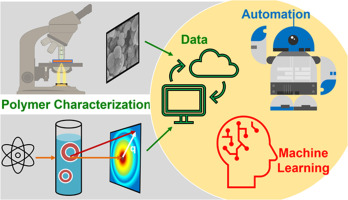- Published on
Automating Your Development Pipeline with GitHub Actions Workflows
- Authors

- Name
- Adil ABBADI
Introduction
In today’s fast-paced software development landscape, automation is the cornerstone of efficient delivery cycles. GitHub Actions workflows empower developers and teams to automate tasks directly from their GitHub repositories — streamlining everything from continuous integration (CI) to deployment and even routine project maintenance. Whether you’re a solo developer or part of an enterprise team, mastering GitHub Actions can dramatically reduce manual toil and increase your project’s reliability.

- Understanding GitHub Actions and Workflows
- Practical Workflow Examples
- Advanced Automation Techniques
- Conclusion
- Start Automating Today
Understanding GitHub Actions and Workflows
GitHub Actions is a CI/CD and general automation platform built directly into GitHub. At its core, a workflow is a customizable process made up of jobs, each consisting of individual steps. Workflows are defined in YAML files within your repository’s .github/workflows directory and can be triggered by various events like a push, pull request, or scheduled intervals.

A basic workflow structure looks like this:
name: CI Workflow
on: [push, pull_request]
jobs:
build:
runs-on: ubuntu-latest
steps:
- uses: actions/checkout@v4
- name: Set up Node.js
uses: actions/setup-node@v4
with:
node-version: '18'
- name: Install dependencies
run: npm ci
- name: Run tests
run: npm test
ondefines the trigger (e.g., a push).jobsgroup related steps.stepsare run sequentially within a job.
Practical Workflow Examples
To get started with automation, here are some common workflow automations you can implement right away:
1. Automatic Code Linting
Ensuring code quality is essential. A linter workflow automatically checks your code style on every push or pull request:
name: Lint Code Base
on: [push, pull_request]
jobs:
lint:
runs-on: ubuntu-latest
steps:
- uses: actions/checkout@v4
- name: Install ESLint
run: npm install eslint
- name: Run Linter
run: npx eslint .
This workflow helps catch style errors early and maintains coding standards across the team.
2. Continuous Deployment to GitHub Pages
Automate your website or documentation updates with a deployment workflow:
name: Deploy to GitHub Pages
on:
push:
branches: [main]
jobs:
build-and-deploy:
runs-on: ubuntu-latest
steps:
- uses: actions/checkout@v4
- name: Build static site
run: npm run build
- name: Deploy
uses: peaceiris/actions-gh-pages@v4
with:
github_token: ${{ secrets.GITHUB_TOKEN }}
publish_dir: ./public

3. Scheduled Repository Maintenance
Automate repository maintenance like closing stale issues or running nightly builds with scheduled workflows:
name: Nightly Maintenance
on:
schedule:
- cron: '0 2 * * *' # every day at 2am UTC
jobs:
close-stale-issues:
runs-on: ubuntu-latest
steps:
- uses: actions/stale@v9
with:
repo-token: ${{ secrets.GITHUB_TOKEN }}
stale-issue-message: 'This issue will be closed due to inactivity.'
days-before-stale: 30
days-before-close: 7
Scheduling prevents manual follow-ups and keeps repositories tidy.
Advanced Automation Techniques
Once you’re comfortable with the basics, you can harness GitHub Actions’ full power by creating advanced workflows:
- Matrix Builds: Test across multiple operating systems or language versions.
- Reusable Workflows: Standardize automation across many repositories.
- Custom Actions: Write your own actions in JavaScript or Docker for unique tasks.
- Secure Secrets Management: Store and use sensitive credentials safely in workflows.
Example of a matrix build to test code on multiple Node.js versions:
name: Matrix Node.js Test
on: [push]
jobs:
test:
runs-on: ubuntu-latest
strategy:
matrix:
node: [16, 18, 20]
steps:
- uses: actions/checkout@v4
- name: Use Node.js ${{ matrix.node }}
uses: actions/setup-node@v4
with:
node-version: ${{ matrix.node }}
- name: Install dependencies
run: npm ci
- name: Run tests
run: npm run test
This ensures consistent behavior across environments.
Conclusion
GitHub Actions workflows provide a remarkably flexible automation layer for your development lifecycle — handling code validation, testing, deployment, and maintenance at scale and with ease. By leveraging workflows, you free your team from repetitive tasks and focus on solving real problems.
Start Automating Today
Ready to supercharge your repositories? Explore the GitHub Actions Marketplace and start writing custom workflows to fit your team’s needs. The possibilities for automation are nearly endless — happy automating!
